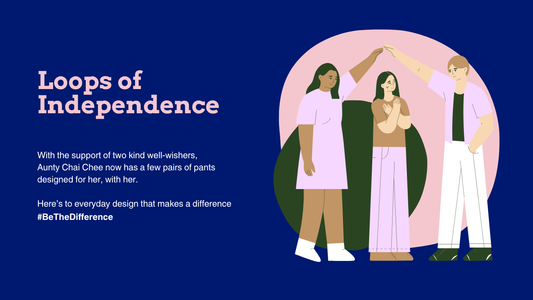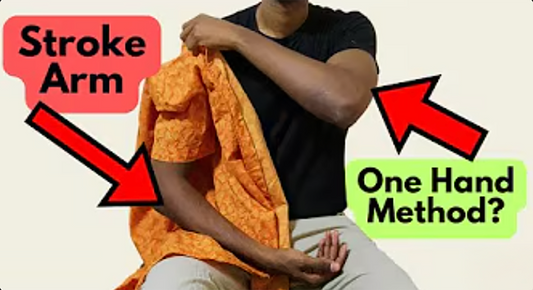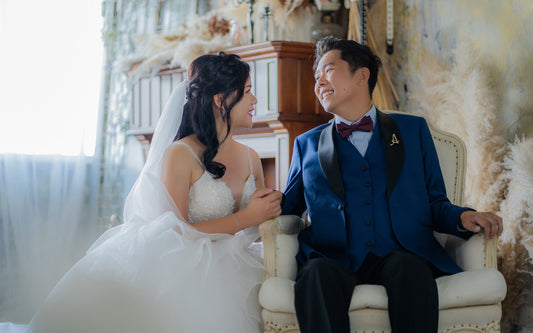
Design for Good | Singapore International Foundation
Combining R&D with innovation, three LASALLE fashion design students come up with a collection that meets the needs of people with disabilities.
Elisa Lim, 23, was feeling uninspired about creating fashion for fashion’s sake. Then the final year fashion studies student at Singapore’s LASALLE College of the Arts got an unusual request from a doctor friend. "He was looking for someone to design clothes for his bed-bound patients. I agreed as I had been looking to do something more meaningful with my skills," she says.
Lim was commissioned to design six articles of clothing, comprising hospital gown alternatives and exercise garments. Her friend and a few other doctors liked the designs so much, they even wanted to make personal orders. She saw a niche market opportunity focused on users’ needs, rather than style or fashion trends. Her research on people with disabilities inspired her to focus her final year project on designs for wheelchair-bound people. She and her schoolmates, Ethrisha Liaw, 23, and Caroline Justine, 22, came together to design clothes for a group of ladies whom Lim had met during her research, and through referrals from organisations like the Enabling Village. Eventually, their project became part of The LASALLE Fashion Showcase, which was supported by Swarovski, Converse and Takasago; they collectively provided S$100,000 worth of products for the graduands’ collections.
Liaw, the project’s co-designer and art director, says it is about using fashion to provide practical solutions, as well as empowering people with different needs. “It’s about forging an inclusive community where everyone is respected, treated equally, and has equal opportunities. It’s also about eliminating discrimination, and valuing diversity. Our project title – 1000 mph – was inspired by activewear. Often, when we walked with wheelchair users, they would slow down to accommodate us. They move faster than us, and it made us think, ‘So who’s the disabled one?’”
PRIORITISING COMFORT AND CONVENIENCE
As most of their clients have muscular dystrophy and need to sit for long periods, Lim and Liaw designed a zip feature at the back of a dress for extendability. “One often feels tension at the back when seated, while wearing a conventional dress. Our zip extension creates more room, so the dress is comfortable for the wearer even in a sitting position,” says Lim. A similar zip extension is used in pants, and magnets instead of buttons are used on the cuffs of a poncho and shirt to make dressing easier. “They just need to flick their hands, and the sleeves of the poncho or shirt will snap into place,” says Lim.
Liaw, who specialises in fabric design, stitched handmade Swarovski pearls onto leg warmers and gloves as a tactile therapy aid to relieve and displace anxiety. “The beads are fun to fiddle with. Also, when they stimulate acupoints, it helps with circulation and triggers the release of endorphins, which are the neurochemicals that relieve pain.” The students also combined bright colours, such as orange and green, and soothing colours, such as baby pink and lilac, for variety and to create visual interest.
“1000 mph was inspired by ’80s and ’90s colour blocking and graphic depictions of shadows,” says Liaw. “We used prints of sports-related equipment or facilities, like soccer pitches, goal posts, basketball courts and swimming pools.”
Liaw also used natural fibres such as cotton and silk, so that the clothes would remain comfortable in humid weather and are easy to move in. These fibres are also 100 per cent biodegradable; the decomposed residues can be used as biofuel.

Both the able-bodied and wheelchair-bound find the clothes designed by Lim, Liaw and Justine to be attractive and comfortable.
RESEARCH EFFORTS PAY OFF
In the eight months the trio took to complete their collection, they had to overcome R&D challenges. “We visited organisations like the Cerebral Palsy Alliance Singapore and the Enabling Village to find out the needs of people with disabilities. We interviewed and surveyed them to find out what they wanted,” says Lim. “We did a lot of prototype testing; clients tried on design samples to test their wearability. They all have different body shapes. We took all these factors into consideration when designing the clothes.”
Lim says it was all worth it when a client said she had never worn a more comfortable pair of pants. “Another client, who participated in our final year fashion show, cried because she was touched that there were people designing clothes for people with disabilities. One of her biggest challenges had been finding clothes that were easy for her helper to assist her with, and which still looked good.”
“ Our project title – 1000 mph – was inspired by activewear. Often, when we walked with wheelchair users, they would slow down to accommodate us. They move faster than us, and it made us think, ʻSo whoʼs the disabled one?ʼ ”
Ethrisha Liaw
EXPANDING THEIR REACH
Justine, who handles the marketing and business aspects of the project, says joining the team was a leap of faith. She appreciates that it has allowed her to merge fashion with a social cause. “I enjoyed interacting with our clients and I think there should be more opportunities for us to mingle with people with disabilities and make friends with them,” she says.
The trio plan to launch their brand, Will & Well, with a new collection early next year. “We’ll work with voluntary welfare organisations for the launch, and expand our collection to include people with intellectual disabilities,” says Lim, adding that the products will be available online, with pop-ups at various locations. “We hope to expand our reach in South-east Asia, as there are very few designers catering to people with disabilities here.”
–



